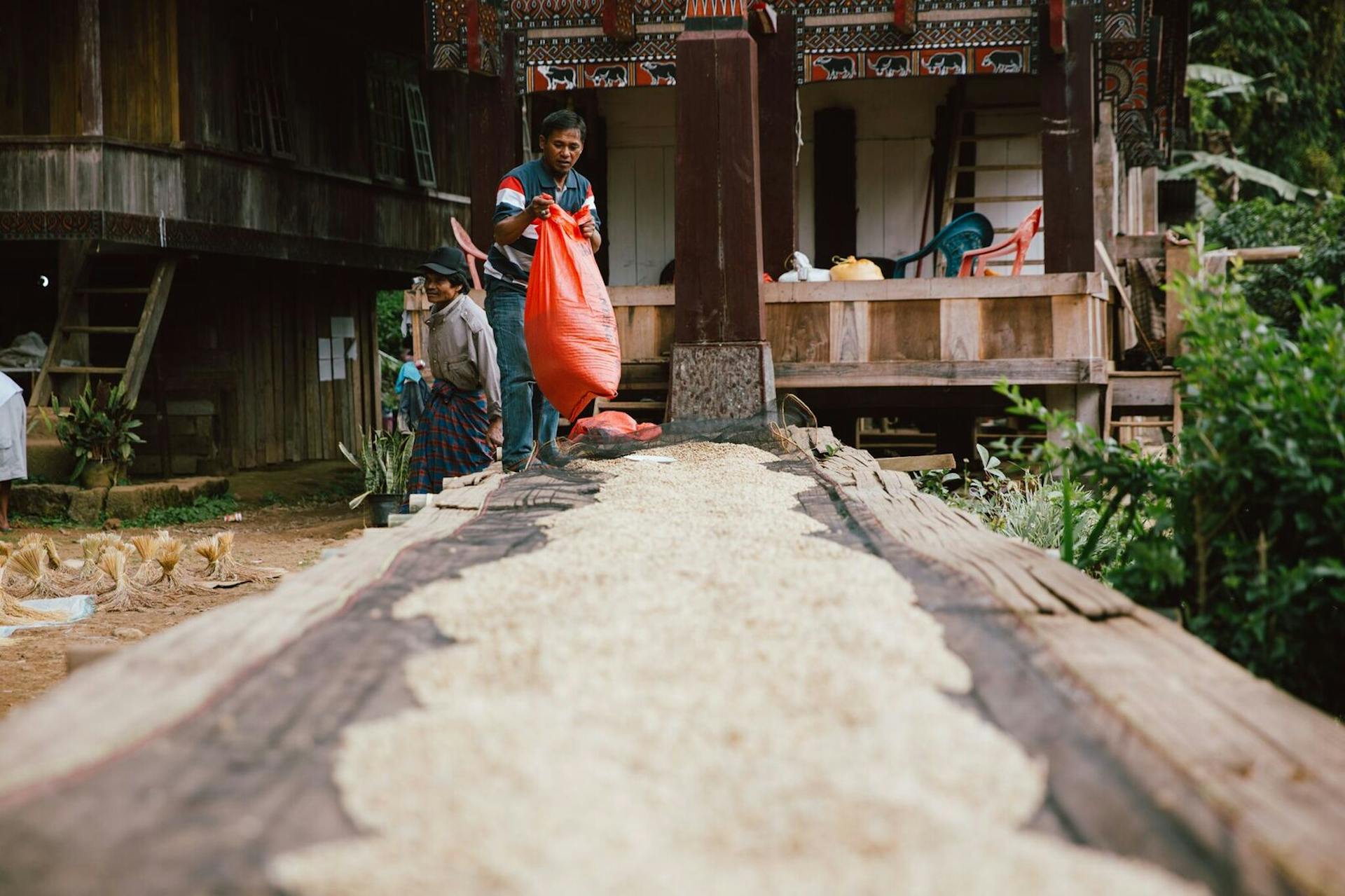Circular Coffee

Posted in Story
Written by Roxane Pochet
June 18, 2021
Lennart Clerkx on Circular Coffee
Posted in Story
by Roxane Pochet
Trying to understand how to improve our impact, we met with Lennart Clerkx for an interview. We have been working with Lennart for the last five years. Lennart is the founder of This Side Up, a coffee trader based in Amsterdam. This Side Up’s purpose is to create fairness and progress across the whole coffee value chain. In this interview, we talk about Lennart’s vision for circular coffee: regenerative agriculture and opensource practices; and his reluctance towards organic certification.
My name is Roxane and I work on LOT61's circularity program. I am interested to know how Lennart got into coffee trading and what inspired him to use trade as a tool to improve people’s life. He explains that his first experience with coffee led him to Tanzania, working for a wealthy danish coffee farmer. This farmer had the resource and willingness to improve the quality of its coffee while creating a good life for his workers. He was providing them with good housing, schools and infrastructures. This was a unique set up in a region where farmers are often taken advantage of by the middlemen and endure a poor livelihood. This is where Lennart discovered that coffee could change farmers' lives: as long as they were treated with fairness and got the knowledge to access a more added-value coffee market.

This Side Up is about creating and sharing a knowledge base that is constantly improved by the users.
This Side Up is all about connecting farmers to roasters, experts and NGOs. It is about creating and sharing a knowledge base that is constantly improved by the users. This open-source system allows farmers to become more independent and This Side Up to constantly tackle new issues and projects.
I explain that we really like this approach and are trying to contribute. By sharing our Circularity report and providing more transparency, we are hoping to inspire others and enter discussions around improving the impact of coffee. I ask Lennart if he agrees that our first step should be a transition to agroforestry beans to reduce the environmental impact of our coffee. Indeed, Lennard is helping us sourcing beans from a very advanced agroforest system located in Ethiopia.
Lennart agrees and shares how he has been struggling for the last four years, since his first customer required organic certification (we initially had asked for a certified polyculture farmer). He sees certification as a very restrictive, expensive and unproductive system where farmers are paying high amounts, get policed and do not get support to improve their processes. Nowadays with the increase of transparency, he does not need certification to know his farmers do not use pesticides and does not want them to pay money unnecessarily.
Also, what is important is to transition into a self-regenerating system and organic agriculture does not guarantee regenerative agriculture. The problem is that many shops that should be interested in hearing about their products and message, exclusively sell organic certified products. To enter the discussion and convey their message, This Side Up decided to invest in organic certification to fight against this process from the inside.

TSU's partners in Brazil focus on keeping their soils strong and alive. They use high regenerative technologies, fungal networks and all kinds of intercropping.
As we ask about agroforestry, Lennart argues that regenerative agriculture is in general a better aim than agroforestry. We learn that agroforestry works especially well for subsistence farmers, who live off their lands. It allows them to grow, sell and consume other products such as mangos and avocados. Farmers who have more financial stability, for example in Brazil, do not need to grow their own food. In this region, more sunlight is needed for the coffee trees, so it is not compatible with a shaded agroforestry system. Their partners in Brazil focus on keeping their soils strong and alive. They use high regenerative technologies, fungal networks and all kinds of intercropping, which make them very advanced compared to Europe where monoculture is dominating.
I then ask if he believes circular coffee, in the sense of self regenerating coffee, is compatible with an increasing consumption and demand. Can we all keep drinking coffee while being part of a circular system?
Lennart’s answer is yes, knowing that Brazil lands are supplying about half of the demand, while being able to grow large scale coffee in a sustainable way. The main challenge is that it takes about five years to see the benefits of regenerative agriculture. In the first years, the yield efficiency is decreasing as the soil is dependent on artificial inputs. After that, we get healthy and resilient soils thanks to the return of fungal networks underneath, which act like an extension of the coffee tree. These practices will increase yield efficiency in the long run and help meet the demand in a sustainable way.
For Lennart, any coffee company that wants to measure its impact should start with soil measurement. The community and network that he builds can help us all develop knowledge in regenerative agriculture, source more sustainably and become more circular.